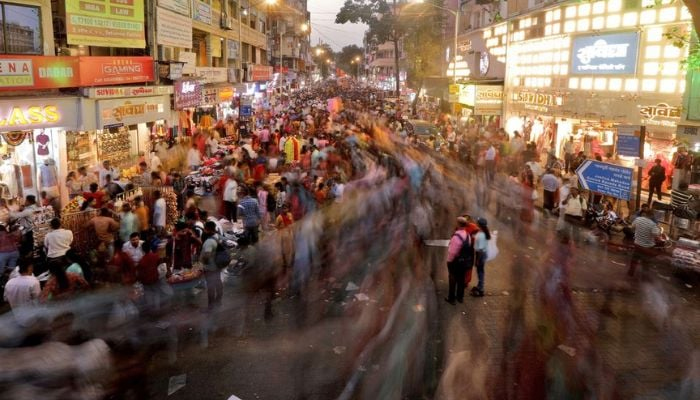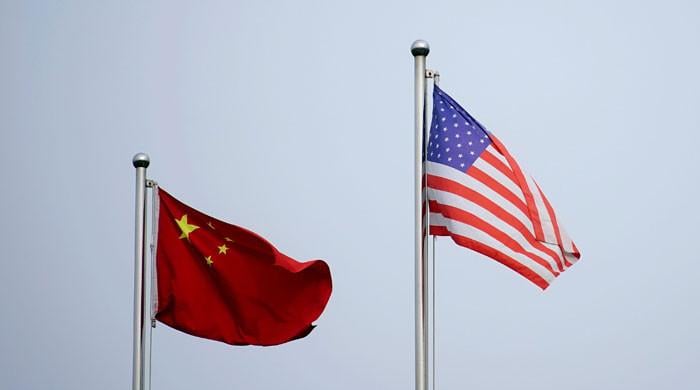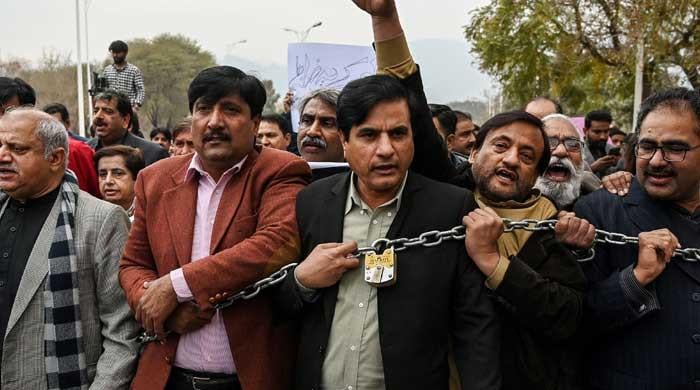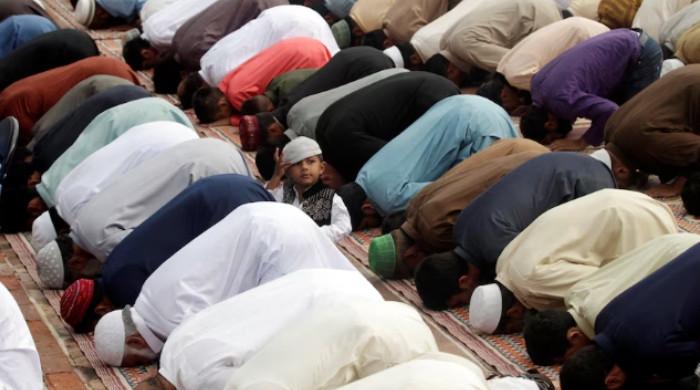India putting on ‘big boy pants’
From being a country full of poor people, India is on its way to becoming a country with a lot of rich people
January 24, 2023

In 1999, when General Musharraf sprung the Kargil misadventure on the Pakistani people, India had a GDP of just over $450 billion. To contextualise this properly, one needs to clock some other countries’ GDPs at the time. Pakistan was at $63 billion. Canada was at $678 billion. The UK was at $1,690 billion or $1.69 trillion. France’s GDP was $1,490 billion or $1.49 trillion. India was a poor country full of poor people.
Today, the UK’s GDP has grown to $3.13 trillion. France has grown to $2.96 trillion. Canada has grown to almost $2 trillion. But India is at $3.18 trillion. India still has poor people. But it is a rich country. Stop reading and rewind. Now play: India is a rich country. India’s ability to sit at the global table is in a different league — nay, a different universe — then it was in 1999. India has put on what I like to call "big boy pants".
Pakistan has grown too. Kind of. But this growth is the kind that only the very desperate patriots and bored WhatsApp uncles tend to celebrate. Pakistan’s GDP is around $350 billion. Pakistan is nearly one-tenth of India’s size in terms of its economy. The delusion of economic parity, if it ever existed, is beginning to corrode. But don’t just put away those reality goggles just yet. There is more.
The economic growth story of India has only just begun. If the last two decades of India’s economic progress have managed to intimidate some of the geniuses that have been running Pakistan, well — they ain’t seen anything yet.
By 2030, or in less than seven years, Morgan Stanley forecasts India’s overall GDP to grow from its current $3.18 trillion to nearly $8 trillion. To grasp what this will mean, one needs to leaf through the forecast data a little more. India currently accounts for 2.2% of global exports. Morgan Stanley expects this to rise to 4.5% of global exports in 2030. The retail market in India is expected to more than double over these next seven years to over $1.8 trillion.
Perhaps most importantly, per capita GDP is expected to increase from $2,278 per year to $5,242 per year. The percentage of Indian households with an annual income above $35,000 per year is expected to rocket up from 5.6% to over 25% of all Indian households. That means that one in every four Indian households will be a global middle-class home. Most will have highly literate individuals driving that household income. Most will be consumers of luxury goods. The Indian celebrity will be the highest paid on the planet because the upper-middle-class Indian will be the single most sought-after consumer on the planet. From being a country full of poor people, India is on its way to becoming a country with a lot of rich people, levelling up their entire economy in 2030.
"Being Indian" was once defined by writers like Pavan Varma as being rife with existential contradiction. In the next seven years and beyond, the economics of India will bridge the gap. Higher incomes, greater wealth and deeper consumption will shift the notion of being Indian substantially. But this is still only a part of the Indian story.
The substantially larger economic entity that India will be in 2030 is being fuelled by the society, polity and economy of India today. This society, polity and economy are principally ones in which Hindu supremacy is the overwhelming norm. This norm stretches from the diet fascist version of Westernised, English-medium Hindutvavadis that populate Western institutions, to the deep saffron devotees of Hindutva that worship the clarity and steadfastness of leaders like Yogi Adityanath. This norm is the one in which a leader like Narendra Modi is rewarded for the Gujarat massacres with the prime ministership of his country. People say, “nonsense, that was twelve years after the Gujarat massacres”. Well, Hindutva is essentially a lament for 800 lost years. Twelve years is barely a comma in Hindutvadi time.
India’s greatness as a nation is being actualised at a time, under the leadership and through a period in which the worst political instincts are being rewarded with the grandest prizes. Of these rewards, the most powerful is the transformation of India from a poor country full of poor people to a rich country with an ever-increasing number of rich people. In almost all contexts, this transformation would merit unqualified celebration. And this is what explains — from Abu Dhabi to Tokyo, and from Washington DC to Canberra — the red carpet that is laid out for Prime Minister Narendra Modi almost everywhere he goes.
Two contexts however generate more nervousness about India than they do excitement. China is part of neither of these contexts — and the brilliant dual-track public diplomacy of India’s policy elites on scaring up the Indo-Pacific theatre with one hand, whilst they also pump the prime for India-Sino trade relations with the other merits an entirely separate discussion.
The two contexts that do merit nervousness about India are the innate Islamophobia of Hindu supremacist thought and action, and the way this supremacist ideology affects the people of India's Occupied Kashmir.
Pakistan, even at its most pathetic — like when making last week’s inexplicable and random appeal for dialogue with India — is the sharp end of resistance to both. This is neither a moral nor an ideological proposition. Nor is it a call to arms, or a demand for a deepening or widening of Pakistan’s already unwieldy allocation of a national effort to countering India. It is however a strategic and political compulsion: Pakistan must learn how to recognise India’s achievements with the rest of the world, whilst defending itself and its core interests. These interests include resisting Indian hegemony in the neighbourhood, managing India’s attempts to unilaterally alter the status quo in the South and Central Asia region, defending against India’s ideological commitment to Hindu supremacy, and exposing India’s brutal occupation of Kashmir.
Internal disquiet in Pakistan, including the unsustainable and unconstitutional interference of the military in civilian affairs, the incompetence of its policy elites, and its dysfunctional economic affairs, all merit a serious set of transformational reforms. But the fundamental purpose of course correction in Pakistan has to be improving the lives of Pakistanis. This improvement to the life of a Pakistani start and ends with economic well-being — with the kind of growth India’s economy has already achieved, and will continue to achieve through the next seven years, as per Morgan Stanley, and really, every other forecast on the planet too. But where does economic well-being start and end for Pakistan? It starts and ends with security: with staying alive.
Pakistan’s vulnerability to terrorism and the tendency of Pakistanis in high offices towards strategic stupidity (see, eg, Kargil, the desperation of the Bajwa Doctrine) have weakened Pakistan, but they have not altered the baseline of national security for Pakistan. India is the driver of insecurity and instability in the region, its growing economic might enhances both the scale of the damage India can do to regional and global stability and the depth of the crisis that Pakistan faces in trying to manage this threat.
The challenge today, therefore, is not for Pakistani strategists to engage in long-winded lamentations (like this columnist is wont to), nor to throw in the towel (like Shahzad Chaudhry urges us to).
The challenge today is to engage in wholesale reforms that serve the ultimate goal of nationhood: improved lives for Pakistanis. Central to the ability to achieve this goal is national security and ensuring regional stability.
We must all acknowledge India’s incredible coming of age as a country. To do so with dignity and security, it is time for Pakistan’s elite – military, bureaucratic, political, business, and all others – to turn the page on a broken, dysfunctional, and failed status quo. It is time for transformational reform in how the country operates. That will be the best way to not only celebrate India but celebrate Pakistan too.
The writer is an analyst and commentator.
Originally published in The News











